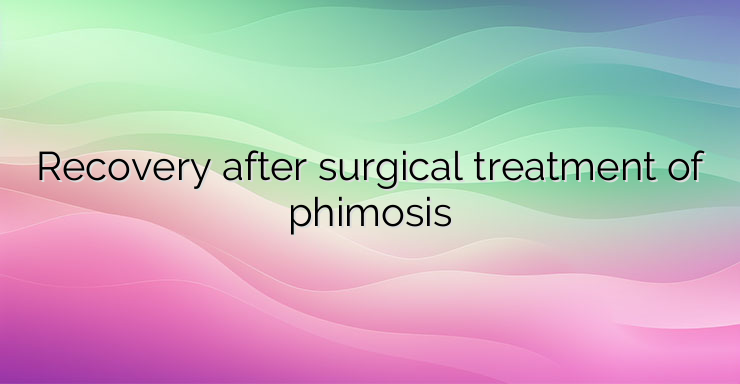Phimosis is defined as the inability to retract the skin (foreskin) covering the head of the penis. The condition can be congenital or acquired. Physiological phimosis is a congenital condition that boys are born with and thus – the foreskin covers the head of the penis. Over time, gradual denudation occurs and by the age of 5-7, phimosis disappears. Pathological phimosis is the result of frequent and recurrent infections of the penis and foreskin, underlying diabetic disease, or trauma with mal-healing in this area, which favors difficult retraction of the foreskin subsequently. Adverse effects of phimosis can be difficulty urinating, pain or discomfort during intercourse, painful erection. Also, phimosis can be the cause of recurrent infections due to difficulty in maintaining good hygiene. Treatment is determined by the age of the patients and the severity of the symptoms. Primarily in children, but also in some adults with a milder condition, gentle daily manual retraction of the foreskin in combination with topical application of corticosteroid ointment is recommended. The latter is applied twice a day, acting by softening the tight foreskin, favoring its relaxation and subsequent retraction. The most commonly used corticosteroids are hydrocortisone 2.5%, betamethasone 0.05%, and fluticasone propionate 0.05%. Surgical treatment includes circumcision (circumcision) performed by a classical surgical method or with the help of a laser. Each of the techniques has its advantages and disadvantages. Shorter operative time, faster recovery, fewer complications and better patient satisfaction are commonly observed after laser circumcision. Possible risks and complications associated with both operative techniques include postoperative bleeding and hematoma formation, glans irritation and infection, incl. meatitis (inflammation of the opening of the penis), pain. The time for complete recovery and healing of the operative scar, as well as for the resumption of sexual function, is on average between 20 and 42 days. During the first 2-3 days after the operation, it is recommended to rest and avoid heavy physical work. It is recommended to keep the surgical wound clean and dry, to dry well after taking a shower in order to prevent the development of infections. In the recovery period – at least 4-5 weeks, it is necessary to avoid visiting public pools and bathing in bathtubs. Sexual contact should be avoided for a period of 4-5 weeks (minimum 15-20 days) or until the surgical wound is completely healed. An erection in the early postoperative period can be painful and unpleasant, as it causes irritation of the surgical wound. The benefits of phimosis correction are numerous, and that is why specialists encourage patients to undertake treatment. After circumcision, the risk of sexually transmitted infections and urinary tract infections is reduced,helps maintain better penile hygiene. The risk of developing cervical cancer in the female partner decreases, the symptoms of pain and discomfort during intercourse disappear. References: https://urology-ucsf-edu.goog/patient-care/children/phimosis/ https://www-pristyncare-com.goog/blog/phimosis-surgery-how-its-done-risks-recovery- time-pc2527


Leave a Reply